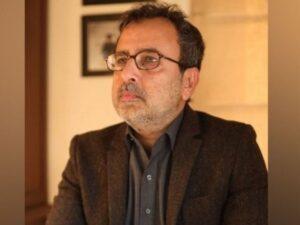Islamabad:
The Election Commission in Pakistan (ECP) released up -to -date voter statistics on Thursday, which shows that the total number of registered voters has reached 133,417,505 (133.42 m) in the country.
Per. March 6, 2025, the data highlights significant gender differences with 71,654,092 (71.65 m) male male (53.71%) and 61,763,413 (61.76 m) Female voters (46.29%) examining the taught gap in choices.
Punjab remains the province with the highest number of registered voters, while Balochistan shows the widest gender imbalance. District collapse also reveals large variations in voter registration trends across the country.
Punjab has the highest number of registered voters who account for 76,010,349 (76.01 m). Of these, 40,467,887 (40.47 m) male (53.24%) and 35,542,462 (35.54 m) are female (46.76%), reflecting a gender gap of almost 7%.
Lahore has the highest number of registered voters of 7,230,110 (7.23 m) with 3.801,545 (3.80 m) men (52.58%) and 3,428,565 (3.43 m) women (47.42%).
Other populous districts include Faisalabad with 5,504,593 (5.50 m) voters (53.44% male, 46.56% female) and rawalpindi with 3,442,156 (3.44 m) voters (51.33% male, 48.67% female).
Sindh has 27,981,501 (27.98 m) registered voters, making it the second largest province in terms of electoral strength. The gender breakdown reveals 15,118,228 (15.12 m) male voters (54.03%) and 12,863,273 (12.86 m) Female voters (45.97%).
Karachi’s districts have the highest number of voters in Sindh. Karachi Central leads with 2,217.127 (2.22 m) voters (53.60% male, 46.40% female), followed by Karachi East with 1,757,836 (1.76 m) voters (53.00% male, 47.00% female) and Karachi South with 1.309,227 (1.31m) voters (53,87,87,87,87,87,87,87,87,87,887,87,87,887,8,88 man, 46.13% female). Karachi West has 995,167 (0.99 m) voters (57.39% man, 42.61% female).
KP has 22,675,553 (22.68 m) registered voters, of whom 12,330,460 (12.33 m) are male (54.38%) and 10,345,093 (10.35 m) are female (45.62%).
Several districts in KP continue to reflect a significant gender difference. Peshawar, the province’s most populous district, has 2,172,048 (2.17 m) voters (55.09% man, 44.91% female).
Other large districts include Marran with 1,589,366 (1.59 m) voters (54.58% male, 45.42% female) and Abbottabad with 975,665 (0.98 m) voters (52.49% male, 47.51% women).
Former tribal areas, now part of KP, also show a wider gender gap. Bajaur has 687,833 (0.69 m) voters with 55.00% male and 45.00% female, while the Khyber district has 662,960 (0.66 m) voters (54.89% male, 45.11% female).
Balochistan has 5,566,441 (5.57 m) voters, making it the province with the smallest voters. However, it also detects the widest gender gap with 3,117,944 (3.12 m) male voters (56.01%) and 2,448,497 (2.45 m) female voters (43.99%).
Several districts in Balochistan have male voter registration over 60%. With 199,593 total voters, Chaman has 64.74% male voters and 35.26% female voters, while Killa Abdullah registers 63.32% male and 36.68% female voters with a total of 171,269 voters.
Islamabad has 1,183,661 (1.18 m) registered voters with 619,573 (0.62 m) men (52.34%) and 564,088 (0.56 m) women (47.66%), making it the region with the most balanced gender conditions.



